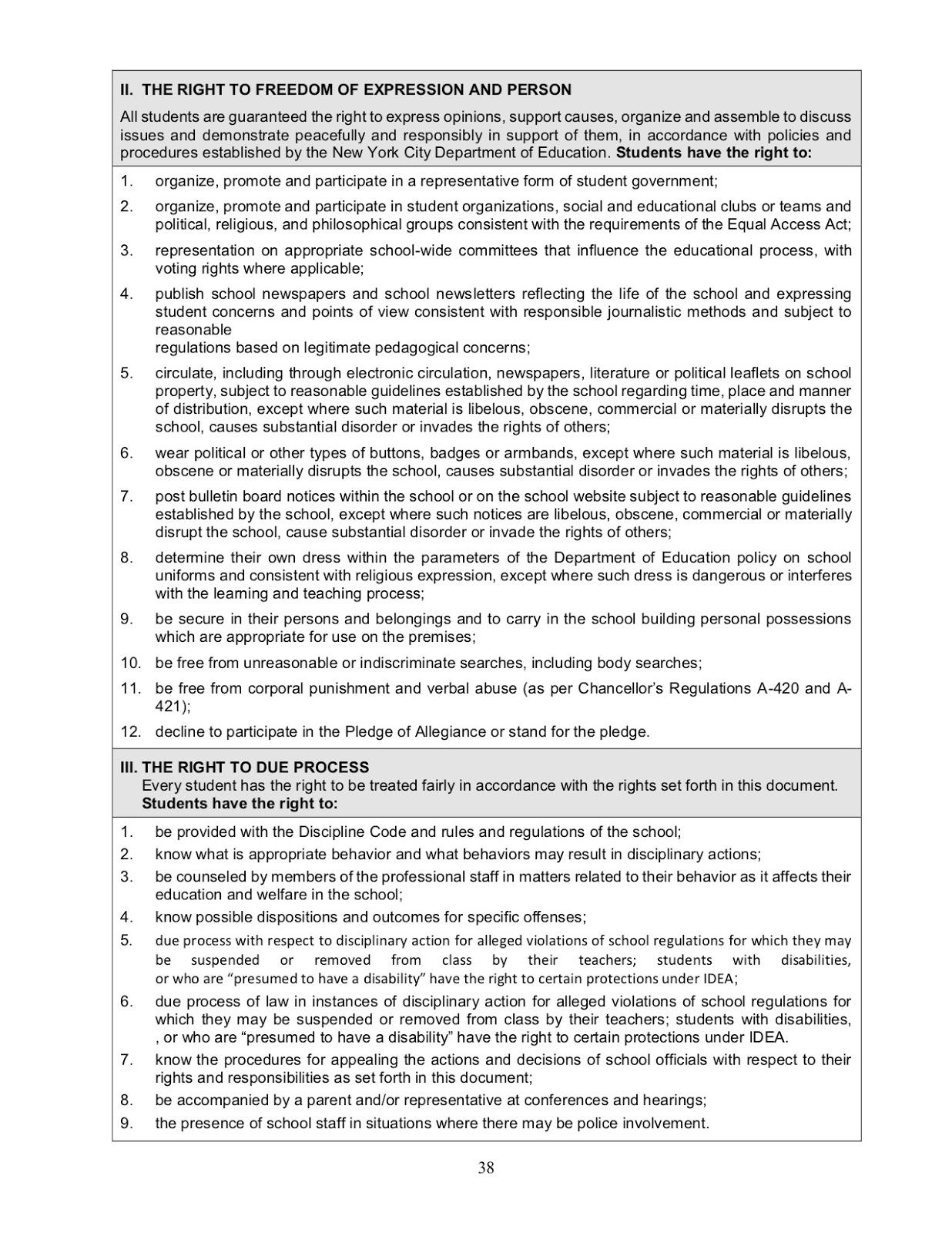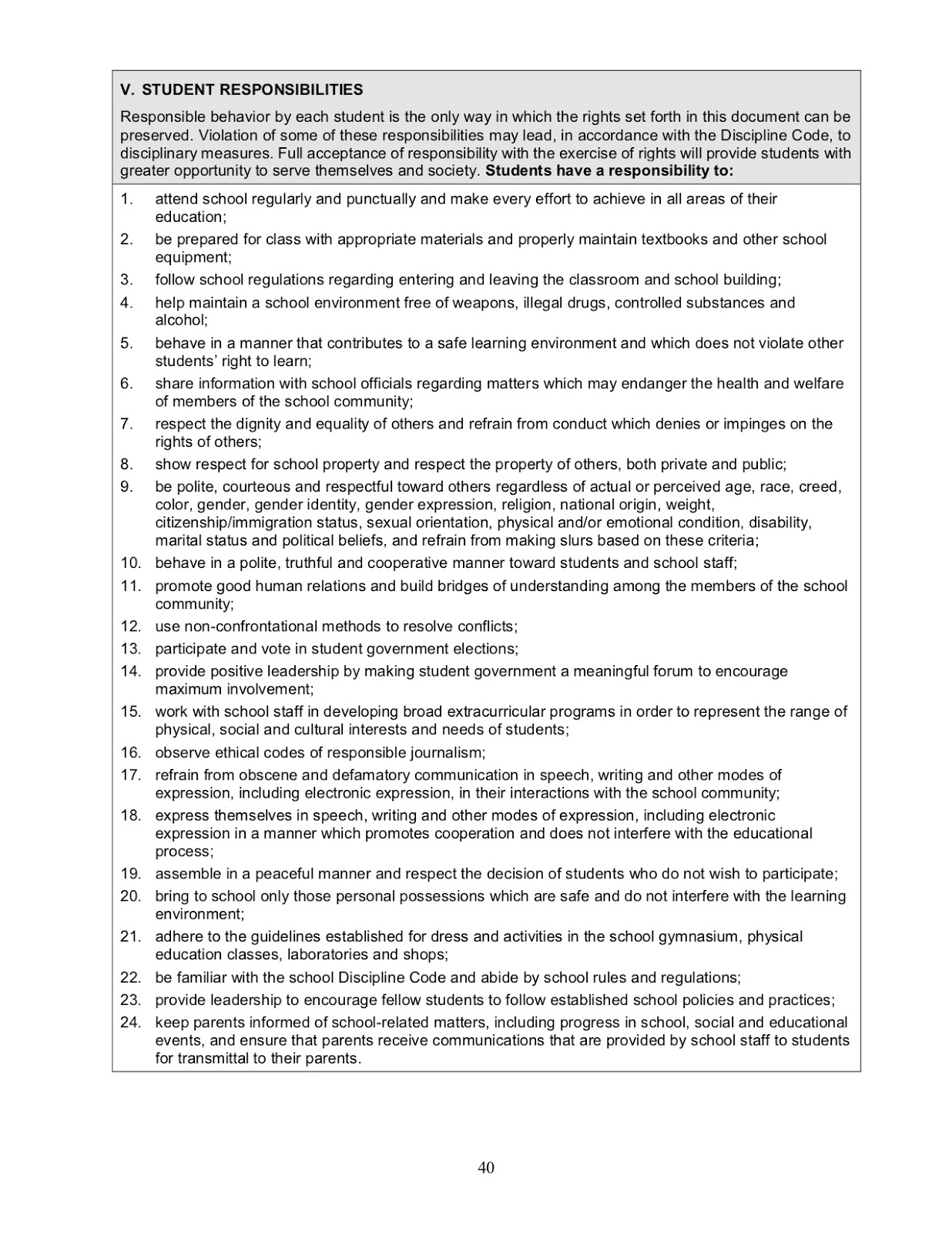“Look around. Strongman politics are ascendant suddenly, whereby elections and some pretense of democracy are maintained — the form of it — but those in power seek to undermine every institution or norm that gives democracy meaning. Who needs free speech as long as the economy is going good? . . . that’s where democratic legitimacy comes from. Not from the top down, not from abstract theories, not just from experts, but from the bottom up.”
—Barack Obama, July 17, 2018
I recently visited a school in lower Manhattan, by all accounts a great school hosting a gifted-and-talented program, multiple arts and music opportunities, and considered a “Staff Pick” of the NYC non-profit school review agency, InsideSchools. In the classrooms, students sat in groups with peers who read at their level, picking what to read from a limited selection of materials provided by the pre-scripted curriculum. This curriculum, a widely-used reading and writing workshop model, had been purchased by the administrator who sent teachers yearly for re-training in program conformity.
I thought to myself, “So this is why the world so often votes for dictators.”
It is a truth all but universally acknowledged, that education serves some fundamental capacity in nurturing freedoms necessary for democracy. But the education we too often see in schools denies the fundamental conditions that actually nurture democracy — the freedom, the norms of cooperation, the diversity of perspectives, and the individual autonomy necessary to develop traits for democratic legitimacy. Bureaucracies develop curricula, administrators buy and then implement it, teachers enforce it, and students comply to it. Looking around, I’m inclined to say that any top-down approach tends always to educate the learner to comply, and the result of a compliance-based system is apathy and attachment to a “strongman politics.”
What might be done instead?

I work at the Urban Assembly School for Green Careers (UAGC), a New York City unscreened public high school. This means that we do not choose who we want to educate based on their test scores, their attendance, or their parent/family support, which stands in sharp contrast to most NYC schools who use these measures to turn students away from their schools. When I started at UAGC, six years ago, the school was considered “failing” by the department of education, which slapped a big fat “F” on its school report card. Its first graduating class had a 39% graduation rate and it ranked in the bottom 1% of New York City schools.
Something had to change.
As part of a group of empowered teachers, I helped lead an effort to transform the school by emphasizing freedom for teachers and students, rather than answering struggle and failure with more oppression. It wasn’t easy. Many reform models for the students served by UAGC sway between the poles of rigidity (drill-and-kill test prep, rigid policies including school uniforms, detentions and suspensions) or relationships (advisories, reward programs, more school counselors). All of these interventions may have their place, but in our context we saw that these could lead either to conformity or to chaos.
We decided to forge a different path.
When the founding principal of the school announced she was leaving, a core group of teachers banded together to advocate for a school leader who would allow maximal autonomy to students, establish universal norms for cooperation, and protect that autonomy by ensuring all members of the community support the norms together. With the support of our network, The Urban Assembly, we were able to ensure that a leader with a shared vision could lead our path forward.
Then the real work began. Continuing today, we work to ensure that all curriculum is “student-facing,” meaning that students have access to every document teachers work with, from rubrics to lesson plans to assessment. The curriculum ensures that students choose their own texts to read, in every subject, with coherent protocols in place across classrooms to help students understand, question, and argue each text they come across. Articles range from colonialism after WWII to lists of the Top 10 NBA players of all time. In each case, the text is always chosen by the student based on their own interests but reflected through the course standards determined by the state. We want students to be doing that important, metacognitive work of planning their learning against established standards (work that teachers, or administrators, or educational publishers too often steal from the students).
Using the School Based Option provided to NYC schools through the union contract, we build our own schedule each year to allow sufficient time for students to delve into this intentional work. This includes a variety of support systems for students and teachers alike. (Note to educators: read your contract! I spent hours poring over it before I figured out how much autonomy we really could exercise!) Those support systems begin with a strong belief: taking away the freedom of students in learning who do not comply to norms undermines the ability for them to learn how to cooperate and practice freedom.
Instead, we as teachers adopted an “on-call” system. Each period, one or more teachers is on-call and available, via radio, to go into a classroom. Because classrooms are normed pedagogically to provide for student-centered autonomy, the on-call teacher takes over whatever the classroom teacher would normally be doing (e.g. coaching students through one-one conferences or facilitating small-group discussion) and the classroom teacher engages in a metacognitive behavior reflection with the student whose behavior is getting in the way of learning.
Not all teachers agreed with this idea at first. Our vote for the School Based Option was far from unanimous, with some teachers suggesting options for other assignments, such as extracurriculars or field trips. At the beginning, arguments were raised on both sides, but in the end the idea that we need to all be in it together carried the vote. Some teachers decided to leave, others became convinced of the importance of these supports as they saw them begin to affect real change. Now, voting in the system is unanimous. When the radioing system recently experienced technical issues, teachers were the first to step in and say, “How do we fix this? We can’t leave students without this support!”
The norms that the on-call system exists to ensure are established at the beginning of the year by the whole community. Every student meets in small groups with the principal, the deans, and their teachers to agree (or disagree) with the norms established through the NYC Discipline Code, the district-wide behavioral expectations. Most students had only ever encountered this when being disciplined, and have no idea their rights are enumerated, as well as their responsibilities in fulfilling those rights. Once their responsibilities are seen as guarantors of their individual rights, students buy-in to the responsibilities outlined. And yet, though students agree to their responsibilities, practicing them is much harder.



Because of this, teachers were in each other’s classrooms all the time, taking collective responsibility for behavior, but it wasn’t enough. In addition to teachers supporting each other, admin had to be powerfully present to follow up on each behavior interrupting learning. The principal, deans, and counselors had the backs of every teacher by following up daily on every referral. Teachers led the ground effort to help students cooperate with each other, administration worked behind the scenes to support that effort through strategic use of suspensions, through behavioral intervention meetings with parents, and through re-asserting the value of the norms students had agreed to.
And still, it wasn’t enough. About a year and a half into the transformation of UAGC, we were in a steering committee meeting and realized there just weren’t enough of “us” — the administrators, the teachers, the deans — to shift the norms of all students to support cooperation. So we said, “Why not give it to the kids?”
Many Positive Behavioral Interventions and Supports tend to focus primarily on empowering school personnel, which may be one of the reasons racial disparities continue even with PBIS. Rather than focus on the school personnel, we asked ourselves why not tap into the largest group in the school, the students themselves? So, in the spring of 2015, we implemented the Keepers of the Culture, a part of the school-wide curriculum we’d adopted called Learning Cultures. At the beginning of the semester, students nominated their peers to become “Keepers,” students who exhibit the school’s core values of responsibility, collaboration, intentionality and who other students would be able to approach for support. Those nominated were then met as a class during the school day, where they learned how to intervene when students needed support. When a student is regularly unable to use self-control in the classroom despite multiple layers of support, the Keepers of the Culture meet with that student to coach and encourage a return to learning. Students then follow-up with in the classes they share together, holding each other accountable. Rather than less than 30 teachers intervening on behalf of more than 300 students, we built capacity by bringing students into the work with us. This was established as a mixed grade civics courses, which meets with 125 students on average 8 times a year.
The civics students help children develop transformational narratives replete with a list of behaviors that were getting in the way of learning, make promises to change non-cooperative behaviors and then brainstorming ways to change. The class conducts over 1000 meetings per year. Current principal Madeleine Ciliotta-Young reflects that “as our social norms program becomes more and a more a part of the core culture of the school, we’re seeing students initiate the interventions for themselves and parents choosing the school knowing that other models haven’t worked for their children.” It’s about making school work for everyone, something many schools have been unwilling, or unable, to do.
Our three core values inform all of the decisions we make: students exercising intention in their behavior and their learning, student collaboration around those intentions being protected, and everyone taking collective responsibility to ensure the norms for freedom and collaboration.
When a team of teacher-powered educators work to innovate, united by common values such as these, there’s no end to what they might do. We can question the systems of oppression that lead to conformity and compliance and, together, change them.
Another key transformation for UAGC occurred during instructional rounds and intervisitations, a vital part of what we do. In our second year of turning around the school, our incoming ninth graders entered at the lowest level we’d ever seen. Less than 2% were even approaching grade level literacy; on the statewide middle school assessments almost all had been rated with the lowest possible score. Very few wanted to be at UAGC; they had been rejected by the schools they had applied to and assigned involuntarily to the “failing F-rated school.” As a class, their self-esteem and motivation had been sucker-punched by the system.
The feeling of defeat, and the rebellion that accompanies it, was palpable in every ninth grade classroom. As the ninth grade English teacher, I was at my wit’s end. The freedoms in the curriculum we had established for students were rejected. “Just tell me what to write, mister, just tell me what to say to pass the class,” or “where’s the worksheet? Just give me a packet so I can fill it out!” were common refrains, full of expletives and frustration. They had been taught success was unquestioned compliance, and apathy was its result.
During our intervisitations, however, we noticed that when these ninth graders were heterogeneously mixed in with juniors and seniors in history classes (because many older students had failed the state history exams and were repeating the course) the classes functioned! Using the classroom structures for cooperation in which the older students had experience, the ninth graders were able to develop collaborative practices that furthered their learning.
One of the key aspects of innovation is your ability to ask “what if,” and then act on it. In this case, we asked, “What if ninth graders weren’t segregated by age group? Would that help them better norm to cooperate?” We did some research on heterogeneous groupings, and found ample evidence to support making such a move. The English team went to our principal, and her response was “Sounds good! Let’s blow up the grades!” It took a considerable amount of time to reprogram for this, making it look to the district as if everything was still traditionally programmed.
The union contract says nothing about this, with the exception of shop and PE classes (which, after seeing the success of the initiative, we voted through the School Based Option to change the following year). However, we knew how important it was to get people on board. As with on-call, teachers identified together the problem that existed, based on our value of norms for cooperation. One twelfth grade teacher remarked, “I spend my entire on-call period in ninth grade classrooms!” Being in each other’s rooms, building shared values, and grounding our thinking in research convinced even the skeptics to climb on board.
By the second semester, we had mixed all English classes heterogeneously, 9th grade through 12th grade. The change was dramatic. Because each student has the freedom to choose their own texts, supported and coached by their teacher, differentiation is built into the curriculum. Teams of students determine a topic to investigate or a question they want to answer. For a student-generated question such as, “Is the criminal justice system unfair?,” a ‘high-performing’ ninth grader reading Bryan Stevenson’s Just Mercy may be partnering with a struggling eleventh grade reader tackling Monster. Both bring their perspectives to the table, both read parts of each other’s texts, and both forge an individual response infused by the perspectives of their peers, authors of fiction and non-fiction, and voices they find from around the world.
Now, in our lunchroom, our hallways, and our school garden, students from diverse backgrounds, of different ages, and of many abilities hang out and chat, practicing the norms for diverse collaboration they are learning in their classrooms. Across “high-performing” schools in the city, however, students are generally segregated, or tracked, into classes based on their age or their perceived ability. Unfortunately, this too often reflects socioeconomic and racial disparities as well. At that “high-performing” school I visited this year, students sat in the cafeteria by class – general education and special education students, mostly black and brown, sat on one side. Gifted and talented students, who had tested into the program often with the support of rigorous, and expensive, test prep, sat on the other side, a contrasting sea of mostly white and Asian faces.
As Barack Obama spoke in South Africa, I was reminded of how important structures for collaboration are in undoing the effects of segregation, of division, of American apartheid. The norms for these collaborative structures must be practiced by empowered teachers and administrators in order for students to experience that empowerment. Teacher-powered structures provide a model for the student-centered practices that must emerge in order for democratic freedoms to be sustained. I’m inspired daily by the work that the students and community of Green Careers engage in to practice that freedom. I hope that more and more teachers, students, and societies grab the responsibility to ask “What if?” and then collaboratively act on their emerging intentions.
“So, young people, who are in the audience, who are listening, my message to you is simple: Keep believing, keep marching, keep building, keep raising your voice. Every generation has the opportunity to remake the world. Mandela said, “Young people are capable, when aroused, of bringing down the towers of oppression and raising the banners of freedom.” Now is a good time to be aroused. Now is a good time to be fired up.”
-Barack Obama, July 17, 2018
 NEWSLETTER SIGN-UP
NEWSLETTER SIGN-UP



